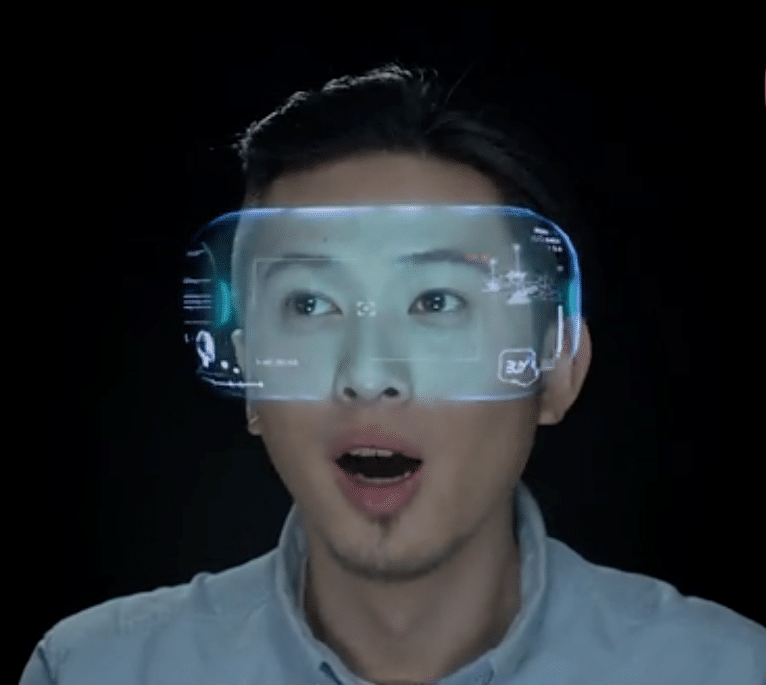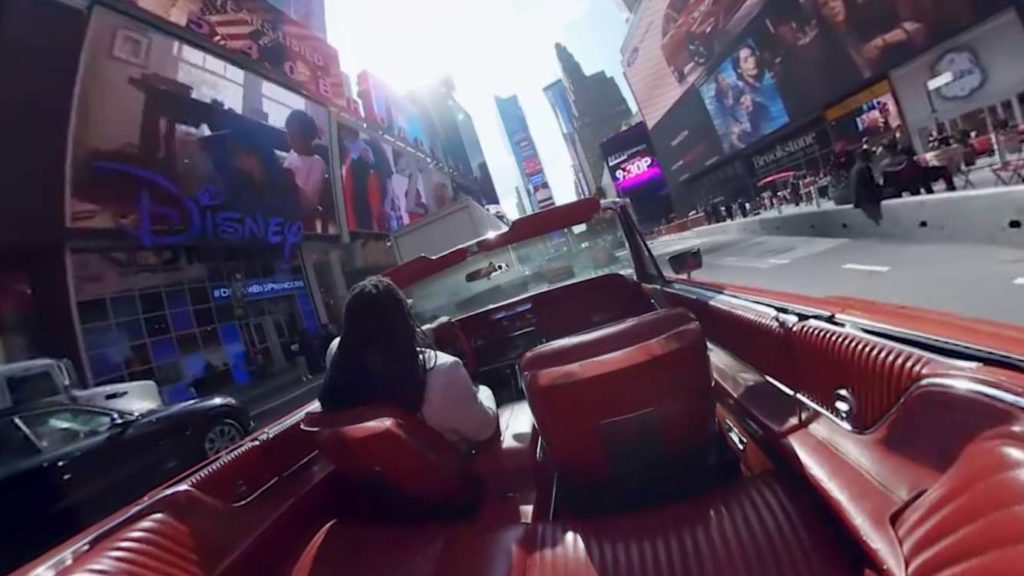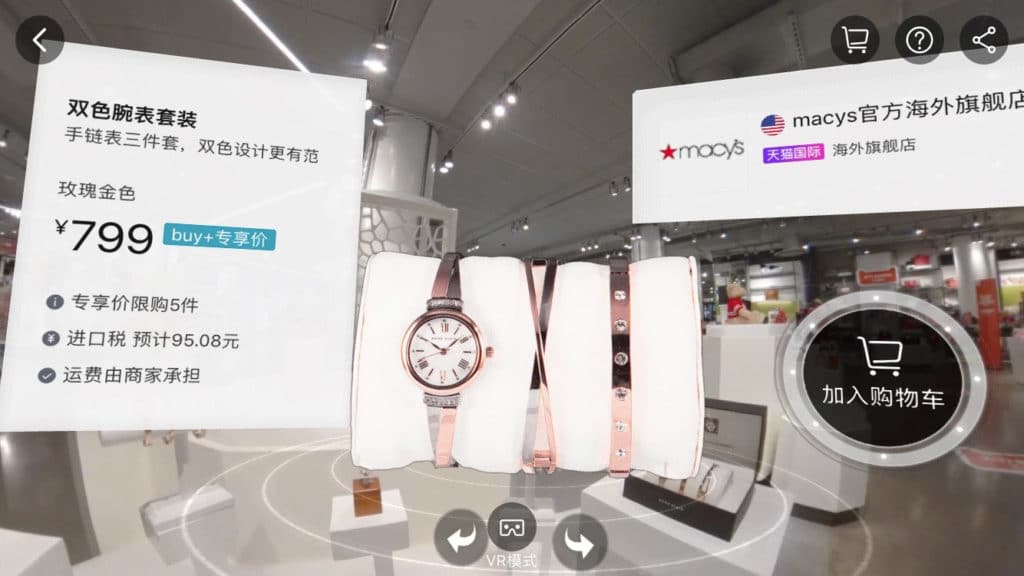Early this year on April Fools Day, Alibaba released the concept video of the VR product called “Buy+”. In the video, consumers can have a real shopping experience in a virtual environment. Here are a few clips from the concept video:


The video instantly went viral and got millions of views.
Well, it turns out Buy+ was not just an April Fools Day joke. This week, Taobao officially launched the Buy+ campaign for the upcoming “Double 11″/Singles Day shopping festival.
Let’s dive into the latest innovation from Taobao…
Taobao VR experience
You can easily access Taobao VR by downloading the latest version of the APP and going into the “我的淘宝” / “VR购物” section of the APP. The experience works with VR goggles (“cardboard type”) or by just looking at your phone and moving it around.
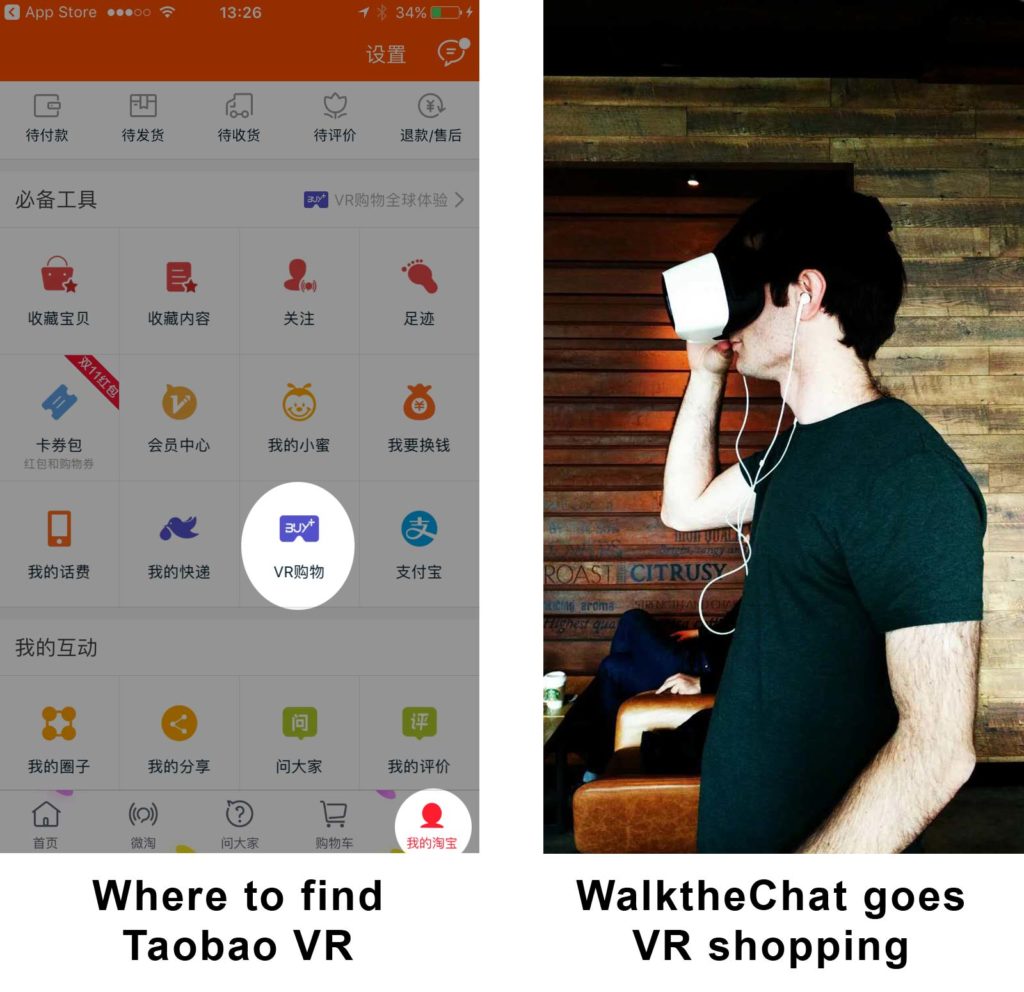 As you enter Taobao VR, you will be transported to a virtual living room where you can pick shopping destinations.
As you enter Taobao VR, you will be transported to a virtual living room where you can pick shopping destinations.
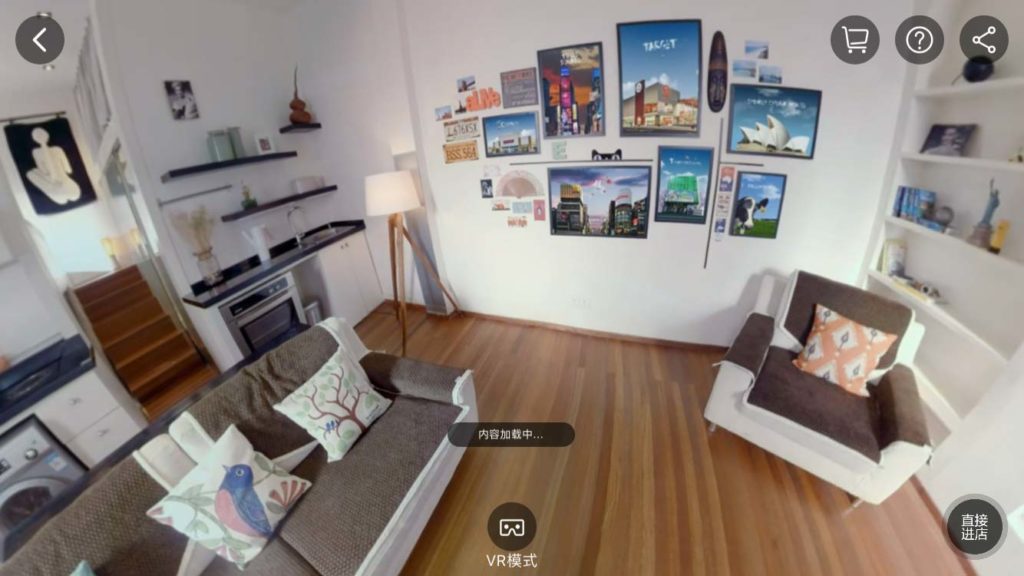
You will then be transported to various destinations such as Japan or the U.S.A. After a quick introduction, you will end up in a famous department store such as Macy’s.


You are then able to click on specific items from the shelves to add them to your cart.
Is it any good?
As far as we could experience with Zeiss and Samsung VR headsets, the Taobao VR experience is rather underwhelming.
Here are the main flaws which are crippling the current Taobao VR experience:
- Poor mobility: at the present state of technology, it is not easy to move around in Virtual Reality. It is easy to look around you, but very challenging to move through the shelves
- Difficulty to access product information: the VR experience makes it difficult to actually look at product descriptions, reviews and other important parameters in the buying decision of most users
- Lack of ease to interact with products: the VR experience from Taobao requires to actually clicks on items, therefore requiring a specialized device such as the Samsung VR with controls on the headset. A basic cardboard VR won’t do the trick.
- Gloomy shopping atmosphere: going through empty aisles, even if these are the shelves of a fancy New York department store, is a creepy experience. Taobao manages to give you the visual display of an oversea shopping experience, but none of the delight
What’s making matters worse is that other more mature technologies such as Live Streaming are definitely stealing the show this year. They enable a more emotional connexion with brand ambassadors through technology, which Virtual Reality definitely fails to achieve.
Could it be better?
So, should we give up on VR e-commerce?
Not just yet.
Other companies have preceded Taobao in bringing VR to e-commerce. Such as, for instance, eBay.
The experience provided by eBay appears as much more thought-through than on Taobao:
- The focus is to provide a radically different experience of products: the idea is to enable users to interact with products in a different way, rather than simply reproducing the offline experience with a headset. This solves the problems of mobility and lack of access to information which ruined the experience on Taobao VR.
- It is possible to use the APP with any cardboard headset: the APP automatically selects item when users focus on them, removing the need to have special controls on the headset. This enables a much more widespread access.
Other companies took a less ambitious approach, using VR for story-telling about the brand. Purchase is not happening in Virtual Reality, which is just used as a medium to educate about the brand, leaving customers to purchase through other more traditional channels.
That’s the approach taken by Dior:
Conclusion
Taobao VR is a PR stunt more than a technological revolution. If VR e-commerce definitely has a bright future, this future is still a few years away from us, as technology matures. For now, although VR might bring additional traffic and engagement to the APP, actual sales will most likely happen through traditional browsing and live streaming.

